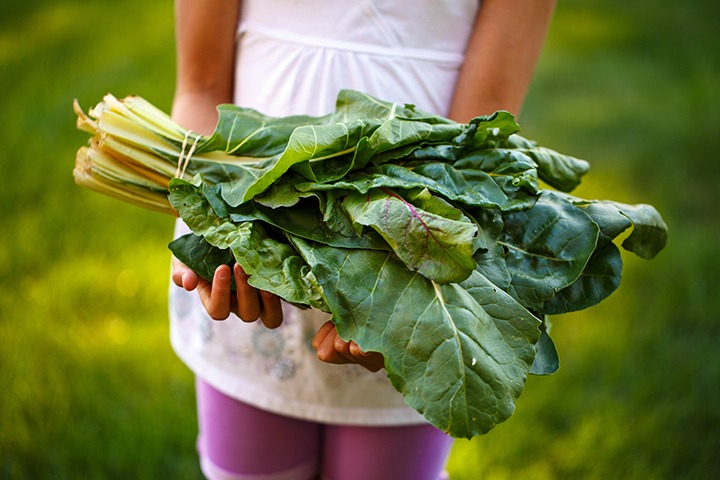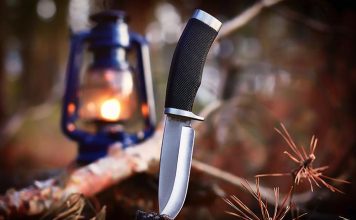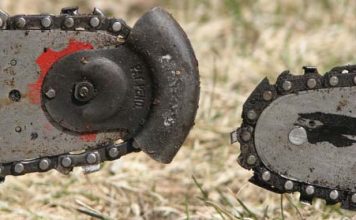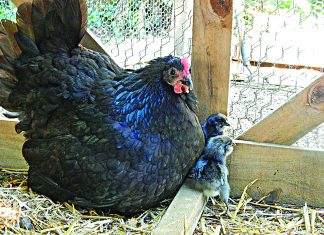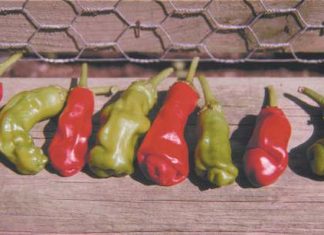 |
|
| Issue #104 • March/April, 2007 |
When you mention “garden,” everybody immediately thinks of sweet corn, green beans, and tomatoes, with a few peppers and cucumbers thrown in. But a whole lot of folks, me included, always grow a good assortment of those unsung, tried-and-true backbones of the gardenleafy green vegetables.
Not only are they oh so healthy to eat but are super easy to grow, extremely versatile in the kitchen, and most can be preserved for later use. Now, especially, with the scares from contaminated spinach and lettuce, is a really great time to start thinking of growing your own leafy greens from your very own garden.
Better yet, a lot of these handy vegetables are also highly adaptable. Not only can you successfully grow them in your garden, but throughout cold seasons with a little protection, in containers on your patio, or even in windowsills so they are handy to harvest weekly.
|
And the variety that’s possible! It is really mind boggling. Here’s just a sample: Spinach, kale, 30 kinds of common lettuce, orach, Swiss chard, collards, turnips, parsley, Chinese cabbage, mustard, corn salad, endive, broccoli raab, and beets. Then, of course, are the lesser-known greens, some of foreign descent, some growing wild in our native countryside. Some we even call “weeds” until we are enlightened as to just how great they actually taste. Nifty, eh? Let’s take a closer look.
Swiss chard
Swiss chard is one of our favorite leafy green vegetables. I grow it for its terrific rich taste and substantial texture. While Swiss chard wilts when it is steamed or simmered, it does not get as “mushy” as spinach can. The mid-rib stalks are succulent and tender. Under good growing conditions, Swiss chard can reach nearly two feet high. Unlike some greens, it does not easily go to seed during the summer. This allows you to harvest it over and over again, all spring and fall. So, a small row or bed provides a whole lot of eating pleasure.
Swiss chard is directly seeded in the garden in the spring when soil temperatures are about 50 to 60 degrees. It can handle a light frost but not a heavy freeze. Starting the seeds indoors is not necessary. But sometimes I do start the variety Bright Lights inside so that I can color-coordinate the row. Bright Lights is a mixture of brilliant colored stems with dark green leaves. Colors range from white to yellow, electric pink, and red. It tastes the same as “regular” Swiss chard, but the colors make it a favorite of ours.
It even easily finds its place in the flower bed. It is that decorative.
I usually grow Swiss chard in a single row because the leaves are large and the plants rampant. However, you can also grow it in containers or in a raised bed. I space my seeds ½ inch deep and about 5 inches between, with rows about 20 inches apart. If sown in a raised bed or container, plant about one seed every 6 inches. When the plants are 3 inches high, thin to one plant every 10 inches (all ways if planted in a raised bed with plots instead of rows).
When Swiss chard is very little, it is sometimes attacked by flea beetles. Covering the plants with a floating row cover, such as Reemay, will often keep the plants safe. If not, spray or dust with rotenone or pyrethrin. Both are natural pesticides.
Keep the growing plants well watered but not soggy. They will rot off at the soil level if they are kept too wet.
You can begin harvesting a few individual leaves as soon as the plant is well established. I add these to my spring salads or a dish of mixed greens. Then as the plant gets bigger, you can harvest more of the outer leaves. It will just continue growing and producing more and more, all season long.
Spinach
Spinach is another of our favorite leafy green vegetables. Besides the sweet taste, I think we love it because we can always grow it, despite our short growing season. Spinach loves cool weather. It can even handle frosts and light freezes with a smile.
There are many types of spinach, from the lusty, savoyed (wrinkled, bubbled, bumpy) leafed varieties, such as Bloomsdale savoy, to the varieties that are grown primarily for baby leaf spinach for salads. As we grow our spinach mainly for cooked uses and in salads, I usually prefer the larger, succulent savoyed varieties. I pick the tender little new leaves to use in my salads and leave the larger ones to harvest in big batches when we want to include it in a meal or can up a batch for winter use.
Because most spinach loves cool weather and tends to go to seed (bolt) when it gets hot, it is one of the first crops in the garden, as soon as the soil can be worked up well. A soil temperature of 50° F is adequate for happy germination. I usually plant my spinach in wide beds, but you can also plant it in rows and, of course, in any type of container. Spinach also makes a good windowsill crop if you choose one of the smaller varieties such as Tyee, which only grows about 10 inches high.
|
The seeds are planted about ½ inch deep, and about 2 inches apart, and then when the plants are about 3 inches high, thin to have the plants stand about 3-4 inches apart. In wide bed plantings, have the plants stand 4 inches apart, all ways. In this way, they will grow happily and shade out most weeds.
The first thinnings can be used for baby leaf spinach in salads. As the plant grows, you may continue picking outer leaves for salads, snipping a leaf or two here and there, to let the plant mature. Then you can use scissors to cut the whole plant off an inch from the soil to steam until tender or to can for later use. In most cases, the spinach will quickly begin to grow again. A good watering will promote regrowth.
You may sow a batch of fall spinach the first of August to grow on through the fall. Even better, you can also continue growing spinach in cold frames or sturdy cloches during the winter in milder climates. (We even had spinach over-winter under six feet of snow up at 7,400 feet in Montana, with no additional protection. This continued growing all spring and most of the summer, without bolting. We had cut it back severely at harvest time, so it must have curbed natural bolting instincts.)
If you grow open-pollinated spinach, you can let a few plants go to seed naturally. When the seed is dry, shake it out into a paper bag, then put on a cookie sheet in a dry, wind-free area to finish drying. Then you can winnow off the chaff in a breeze and pour your seed into paper envelopes or film canisters to save for next year’s garden.
Luckily, there are several good hot-weather spinach varieties now on the market that will not only stand the hot weather without bolting, but actually thrive in it.
Kale
Kale is sort of like a big brother to the more common collards. It is sweet, tender, and succulent. Kale is also very versatile, being equally useful in salads, stir fries, soups, and as a steamed green. Very hardy, it can be grown in just about any climate with ease. By planting successions of crops, it can be grown right through the winter, using appropriate protection such as cloches or cold frames, in all but severe climates.
There are many very different types of kale. Some are reminiscent of a stout spinach with heavily savoyed leaves. Others are very ruffled and curled. Still others are toothed and relatively smooth. And if that isn’t enough, there are gorgeous varieties of brightly colored kales, brilliant enough for your favorite fall flower bed. These have green, white, purple, blue-green, and red stripes, and splashes in their loose heads, looking like huge, colorful (but tasty) roses.
Kale is best direct seeded into a well-worked seed bed in early spring, just before the last spring frosts. The seeds should be planted ½ inch deep, and about 1 inch apart in rows or about 4 inches apart, all ways in beds. When the plants are about 4 inches tall, thin them so they stand about 18 inches apart, all ways, in beds or 18 inches apart in rows. These thinnings are excellent in salads as they are sweet and very tender.
They have the same pests as Chinese cabbage, broccoli, and other brassicas. See Chinese cabbage for information on control.
Turnips
While turnips are thought of as a root crop in many areas of the country, they are also commonly used as a leafy green vegetable. Especially in the south, turnip greens are a gardener’s staple. They should be everywhere. Not only are they very tasty, having a strong sweet flavor, but they are easy to grow, and very productive. Besides the greens, those hard-working plants also produce succulent roots that are especially good for winter storage in a root cellar (or even left in the ground in milder climates).
While there are several varieties, our old favorite is Purple Top White Globe. This old timer is hard to beat. I plant my turnips in double rows, planting the seeds ¼ inch deep, and about 1 inch apart. The rows are about a foot apart. Turnips are a little slow to germinate. Soil temperatures below 50° F make them slower; warmer temperatures bring germination on faster. But keep the rows evenly moist. If you let them dry out, you will kill off many germinating seeds even before you see them.
As the plants emerge, be on the lookout for flea beetles. They are tiny black bugs that leap about when you walk. Look out for tiny holes in the new leaves of your baby plants. In a couple of days, there will be no more leaves left; the plants are all eaten up. To prevent this, either cover the rows with a floating row cover, such as Reemay, or dust with rotenone.
Another turnip pest is root maggots. The flies lay their eggs at the base of the plant and the maggots tunnel down through the turnip roots. Using a floating row cover also prevents this problem by not allowing the flies access to the base of the plants.
|
When your seedlings are growing well, you may thin them to about 6 inches apart. These thinnings may be used in salads or as an addition to any recipe using fresh greens. I usually pull the thinnings, then snip off the roots right in the garden, dropping the clean plants right into my harvest basket.
I snip off larger, tender turnip greens all summer to use as a steamed green and take a few tender sweet little leaves to use in salads. When the turnip roots are about 2 inches across, I often pull the whole plant. I clip off the new turnip and clean it well, then cut the tougher lower part of the leaf stems. Then I simmer the whole bunch together for a slightly different take on boiled turnip greens. More substance, succulence, and different colors in one dish.
Chinese cabbage
There are two kinds of Chinese cabbage, the heading type that makes a tightly packed oval “cabbage head” about four pounds in size, and the pac choi family, which is a plant with thick, roundish, green leaves growing on a white, thick stalk. While pac choi can certainly be used fresh in salads or boiled as greens, it truly shines when added to a mixed stir fry.
Best yet, pac choi is very easy to grow. Simply direct sow the seeds in your garden just before your last normal spring frost date about ½ inch deep and about one seed per 2 inches. Thin the seedlings to about a foot apart in rows or all ways, in wide beds.
If flea beetles are a problem in your garden, either cover the row with floating row cover (Reemay) or dust periodically with rotenone until the plants are large enough to withstand minor attack. If cabbage worms are a problem, the same controls apply.
You may harvest a few small tender leaves periodically as a salad addition. Pac choi has a nice, sweet cabbage flavor, as well as a tender, succulent texture. As the plants mature, cut the entire plant at ground level and use as a steamed or boiled vegetable or as an addition to stir fries. It keeps well in the refrigerator for quite a while.
Pac choi can also be planted later in June for a fall crop. You lucky gardeners who live in milder climates can have success growing pac choi in cold frames or under sturdy cloches to harvest through early winter.
Lettuce
There are so many different types of lettuce today that there are varieties to suit anybody’s taste and visual appeal. Where most lettuce used to be green, now there are reds, purples, stripes, spotted leaves, and more. There are head lettuces, leaf, French, Romaine, and butterhead. To top it off, there are also innumerable mesclun salad blends. (Mesclun is a French term which simply means a mixture of different salad greens, giving a combination of colors, textures, flavors, and types of greens.) Most have different types of lettuce as a base, with other ingredients, such as mustard, parsley, chervil, radicchio, joi choi, and others, mixed to gourmet tastes.
Lettuce is a cool weather lover. You can plant it at the same time you plant peas; just as early as the ground can be worked up in the garden. It can take several frosts and even light freezes without as much as a frown. Most varieties of lettuce are simply direct seeded into the garden, although starting heading varieties in a flat, inside, or in the greenhouse will give you much earlier heads of lettuce.
Lettuce seed is planted about ½ inch deep, about 1 inch apart, either in rows or in beds, scattering the seed about 2 inches apart, all ways. Lettuce germinates very quickly; in as little as three days when conditions are right. It grows quickly, so soon you can begin snipping off whole plants, thinning the stand so that the plants come to be about 8 inches apart all ways for leaf lettuces, and about 12 inches apart all ways for head, Romaine, and bibb. A small 2-foot square bed of mixed leaf lettuce will supply most families with salads all spring and early summer. If another is planted with heat-tolerant varieties, this can be extended to provide salads all summer and fall. If yet another is planted in the first bed in late August or September, especially in a protected spot, you will enjoy lettuce well into winter. This is true even if you have to cover the bed with a small portable cloche or mini-greenhouse.
These first thinnings are your first salad ingredients. Then, as the plants continue growing, your salads will get more substantial. By varying different types of lettuce and by planting successions of seed, you can have good lettuce right into hot weather. When hot weather is here for good, you’ll find that all but the more heat-tolerant lettuces will become tough and bitter. I whack off all but the summer varieties and feed it to the goats and chickens as a treat. In a few weeks it will be cool enough to start a whole new batch of fall lettuce.
By using a cold frame or cloche in a protected area, you may well have lettuce all fall and winter if you are lucky enough to live in a mild climate.
If you grow open-pollinated lettuce, you can forego the whacking off and let the plants (or at least some of them) go ahead and bolt, sending up seed stalks. When these dry, you can shatter the seed out and save it until next spring. I store my lettuce seed in paper envelopes or in empty 35 mm film canisters. I write the name of the variety on a small piece of paper and roll it up and put that inside, too, just so I remember what those tiny brown seeds are.
Beets
Beet greens are an old-fashioned, nutritious, tasty family favorite. And, because beets are so hardy, they’ll grow just about anywhere. Like lettuce, they can be planted at or just after the time you plant peas; as early as the soil can be worked (soil temperatures at or about 50 degrees). The baby plants are not bothered by frosts or light freezes.
Like turnips, beets are a double-crop vegetable. Not only can you harvest the juicy round root, but you can pick a few tender leaves all spring and summer to use in salads, cut more of the leaves off when the plants are larger, or pull the small beet and leaves to cook together in beet greens.
The seeds can be sown in rows, double rows, or beds. I prefer to plant my beets either in beds or in double rows to conserve both garden space and moisture. Beet seeds are double, so out of each seed you will usually get two plants. So even when planting the seeds ½ inch deep and 1 inch apart, you will still need to do quite a bit of thinning. I often use these tiny first thinnings in salads as they are succulent and sweet. Later on, thin again so the beets stand about 4 inches apart when the plants are about 3-4 inches tall. You can either use these as salad ingredients or else in a batch of steamed greens.
Beets are generally pest free, adding to their appeal.
Wild leafy green vegetables
Now if all these choices of tame leafy greens aren’t enough, there is a wide assortment of wild greens that are not only safe to pick, but also taste terrific. The old timers knew this and these vegetables were often the much-welcomed first foods of spring following a long, cold winter.
Dandelion
The dandelion is one wild crop that is sometimes all-too-familiar, being thought of today as a lawn and garden weed. With its toothed leaves growing in a rosette, and its bright yellow flower growing on a hollow long stem, even small children readily recognize it.
|
Fresh, tender new leaves are tasty additions to any spring salad. (Don’t expect tasty from summer-old, tough plants; they are bitter.) Likewise, the entire rosette of leaves can be savored as a steamed or boiled green, but don’t expect tasty greens from old plants that are flowering. Edible, yes, tasty…not so very.
To cook dandelion greens, pick succulent fresh plants that are not blooming yet. Rinse them well and place in a large stainless steel or enameled pot half full of cool water. Bring to a boil. Boil until wilted down. Drain and repeat the process until the greens are tender. This removes most of the unwanted bitterness.
Do not pick dandelion greens from a lawn unless you are sure chemical fertilizers and insecticides have not been used on it. Likewise, you don’t want to pick dandelions from a lawn where pets use it as a potty. Some diseases and parasites can be picked up from eating greens contaminated with even small amounts of pet feces.
Lamb’s quarters
(Chenopodium album)
Another common, well-known “weed” is lamb’s quarters. The plant has diamond or triangular leaves that are wavy-edged and have a whitish sparkly look on the bottom side. It starts out as a bushy 6 to 8 inch high plant and then starts to grow taller, with fewer and smaller leaves. You’ll often find it in gardens or other areas where the soil has been disturbed.
When the plant is young and tender, it makes an excellent addition to spring salads. Like spinach and lettuce, as you cut off the first growth, the plant simply grows again, giving you multiple harvests.
In New Mexico, our side “lawn” next to the garden had once been a sand dune with cow manure mixed in from the dust in the barn lot. Spring rains brought a huge flush of lamb’s quarters, covering an area 50 feet by 25 feet, thickly carpeted with succulent greens. Our family spent hours out there snipping off baskets full of these healthy greens. We used them as spring salad ingredients, and I canned pints and pints of them to use for greens in the winter. It was one of our easiest “crops” to grow. My son, David, grew up loving it. He’d sit for long periods in the patch of lamb’s quarters, just gloating in the bounty bestowed upon us.
One warning though; lamb’s quarters (and several other greens) contains oxalic acid, which can be toxic to people consuming large amounts, usually with extended use as well. This has happened in the past, in times of famine, when people ate lamb’s quarters as a sole diet. Cooking breaks down the oxalic acid, but one should not over-do meals of this green. Eating a meal containing lamb’s quarters once or twice a week is just fine. We’ve used it for years without the slightest complaint.
To cook lamb’s quarters, simply rinse the tender leafy parts of the plant (don’t use the coarse stems, as they are tough). Then steam or boil until tender, about 10 minutes. Drain and eat.
Pigweed
(Amaranthus retroflexus)
Right behind lamb’s quarters, in my book anyway, comes pigweed. Now who would want to eat something called “pigweed,” anyway? How about if we call it amaranth? Does that sound better?
It’s really a great leafy green vegetable that gardeners love to hate. Like lamb’s quarters, it is often a garden weed. Pigweed is a coarse, large-stemmed plant that has oval to long-pointed wavy edges. The leaves are large and often the veins or stems are red colored. The most common pigweed is redroot pigweed. The root, as well as the stem and leaf veins, are red in color.
I like my pigweed steamed or boiled, like spinach, until tender. As the plant is coarse, this takes longer than it does for the more tender spinach; often 15 minutes or more. Like lamb’s quarters, I have canned many bushels of it to use during the winter as a green and it is always much appreciated. I always defy anyone to tell me which green they are eating; pigweed or spinach! And pigweed always grows, despite heat, drought, or being trampled on by heavy feet. Now that’s my kind of vegetable.
One caution though: Plants growing in areas where farm nitrogen is commonly sprayed on fields or in some western areas, high in nitrates, can accumulate dangerous amounts of nitrates in them. If you live in such an area, I’d pass on harvesting pigweed, just to be safe.
Purslane
(Portulaca oleracea)
There’s another garden weed that is great to eat. In fact it is David’s “favorite weed.” When he was still in diapers, he’d bring me a handful to okay (our family policy when wild harvesting), and when I’d give him the nod, he’d plop down and begin picking the fat, succulent leaves and pop them in his mouth with a happy smile.
Purslane is a sprawling garden weed with smooth heavy stems that are red or pinkish. The leaves are paddle shaped and wider at the tips than the stem. They are fat and succulent.
We rinse the plant, then strip off the leaves and add them to salads. They are very good. And they are just about the best wild green you can cook up. I chop up a rinsed plant into coarse pieces, then stir fry it in a pan that bacon has been cooked in. It requires little grease, so I pour off all but what clings to the pan. Then I add the purslane and some finely diced onions and fresh peppers, if I have them. When they are sautéed, I pour on some beaten egg and scramble the whole works together. It makes an excellent meal, whether breakfast or any other time. We are careful not to weed all of the purslane out of our garden. It’s one of our favorite vegetables. Seed catalogs are now selling a domesticated variety of wild purslane that has even larger, fatter leaves. How ’bout that for a weed?
One caution though. Like lamb’s quarters, purslane contains oxalic acid and should not be eaten in huge amounts or as a regular basis for a diet. Used with reason, though, it is a safe and tasty wild vegetable.
Stinging nettles
(Urtica dioica)
The nettle is another common homestead plant, preferring disturbed soil. It is frequently found around fence lines, garden corners, and beside old barns and outbuildings. The nettle does sting when you brush up against it with bare skin, leaving a burning sensation. The key here is to pick the plants when they are small and tender. While they can still sting, they don’t usually bother quite as bad. To be safe, use gloves and scissors to clip off the plants under 8 inches in height.
Obviously, stinging nettles should not be used as a salad green. But nettles make an excellent steamed or boiled green. The boiling or steaming kills the stinging element, leaving tender, tasty greens behind.
The nettle plant has opposing leaves that are a pointed oval with toothed edges. The plant can mature to several feet tall and quite robust. (It’s a perennial, so look for the dead stems from last year’s plants.)
These are only several of the most common wild leafy green vegetables, known to most people as garden weeds. Of course there are many more available. Before going into extensive wild foraging, it’s safest to pick up and thoroughly study a good book on wild edibles. One of my favorites is Edible & Medicinal Wild Plants of Minnesota & Wisconsin by Matthew Alfs. While the title is somewhat limiting, most of the plants described and photographed in detail are common throughout most of the country.
Tips for growing the best leafy green vegetables
Mulch:
While mulch is a good idea for all garden plants, it is very much needed for greens intended for salad use. These are usually shorter plants and are more susceptible to being covered with dirt and sand when you water or when it rains. Garden soil simply splashes up onto the stems and leaves. You’d be surprised at how tenacious it is, once it is on them. Nothing turns off a diner quicker than chewing a gritty mouthful of fresh (or even cooked) greens. Just talking about it makes the hairs on the back of my neck stand up. After I have thinned my greens the first time, I apply about four inches of straw as a mulch, or another organic mulch. Not only will this keep the greens grit-free, but it will keep them growing stronger because their roots stay a little cooler (which greens love) and moist, due to slowed evaporation of soil moisture.
Insect control:
Many greens are susceptible to insect damage, especially when very small. As they emerge from the soil, keep careful watch for flea beetles. These can hardly be seen. They are tiny black insects that spring away when you approach the area. You will first notice a problem when tiny plants, having only two leaves, start having lots of holes eaten in them. Little round holes. Immediately dust them with rotenone and your problem will usually be controlled. When you know you have had a problem with this pest, simply cover the area where your plants will emerge with a floating row cover, well pegged down to the soil. This prevents the insects from invading your greens beds in the first place.
Some greens, like lettuce and Swiss chard, are relatively pest free once they grow stronger. But others, especially those of the cabbage family, are prone to cabbage worms, as are all brassicas. Keep watch for large white “butterflies” with black spotscabbage moths. These lay their eggs on your greens, and soon the green larvae emerge and begin chewing holes in your dinner-to-be. Again, beforehand, cover the plants with a floating row cover or if you didn’t get around to it, dust the crop with rotenone before severe damage is done. You can also spray Bt (bacillus thuringiensis) on your crops. This natural control paralyzes the caterpillars digestive tract and they die from starvation. It does not affect birds, helpful garden insects, pets, or people. I have had great luck with this control. It is available at many better garden stores or through Gardens Alive (www.GardensAlive.com; 5100 Schenley Place, Lawrenceburg, IN 47025; 513-354-1482) and several other mail order sources.
Watering:
All leafy green vegetables need adequate watering to prevent them from growing tough and stunted. They do not want to be wet all the time, but the roots need regular deep watering if it is not raining frequently. I much prefer using sweat hoses or drip irrigation on my greens to help keep both water and dirt from splashing up on the plants. Some greens get brown spots on their leaves from too much water splashing on them. A slow, continual seepage at their roots is very beneficial. I lay down my seep hoses under the mulch and the plants are very appreciative, giving us fresh greens for three seasons…..even here in the extreme north.
Putting up greens for winter use
|
Most leafy green vegetables, with the exception of lettuce, are easy to put up for winter use. The key is to rinse them very well before attempting to do so. No one wants to eat greens with grit and sand in them. While you can rinse any of them under running cold water effectively, a great gadget is the Salad Spinner. This plastic basket holds your wet greens. You just spin the crank and centrifugal force shoots out any grit into your sink. It’s really amazing.
Once your greens are well rinsed, pick out any browned or damaged leaves. Then place them in a large kettle with just enough boiling water to wilt them down. Then cover the kettle and raise the heat. You want the greens just wilted down, not mushy. Check in a few minutes. When done, you may cut the greens up with a sharp knife, if you prefer. Then pack hot into hot jars to within an inch of the top. Add ½ tsp. salt to each pint or 1 tsp. into each quart, if desired, then pour just enough boiling water to cover the greens to within an inch of the top of the jar. Wipe the rim clean and screw down the ring firmly tight. Process in a pressure canner at 10 pounds (unless you live at an altitude above 1,000 feet and must adjust your pressure to suit your altitude; consult your canning manual for instructions if necessary), pints for 70 minutes and quarts for 90 minutes.
These directions apply to beet greens, turnip greens, Swiss chard, kale, mustard, poke, spinach, and wild greens. They are all very good home canned.
You can also freeze most greens, with the exception of lettuce. Simply prepare as above, then blanch for 2 minutes. Cool, drain, and pack into freezer boxes or bags, leaving ½ inch of expansion room. Seal, label, and freeze.
How to cook with leafy green vegetables
Where most people simply boil up their greens and eat them that way, this is just the beginning. Greens are so much more versatile than that. Common in Asian and other ethnic dishes, they should be more widely used here. After all, they are so nutritious and easy to grow anywhere.
I add a variety of raw greens to all my salads, chop them up in soups, stews, and casseroles, and use them in stir fries, quiches, mixed vegetable dishes, and more. They even find their way onto our breakfast plates in the summer, stirred in scrambled eggs with bits of ham or bacon. And everyone likes them. When David was three, he’d ask me for purslane for dinner and never wanted candy. But then, we liked our greens and he’d never been around people that went, “Greens? Eeeuuu!”
So, while shopping through all those tantalizing new spring seed catalogs, please consider the wide variety of leafy green vegetables available, and give at least a few of them a try. Even if it’s a window box full of lettuce and spinach or a few short rows in your garden, you’ll be surprised at the fresh and wholesome taste. Plus it’s one step closer to self-reliant living.


